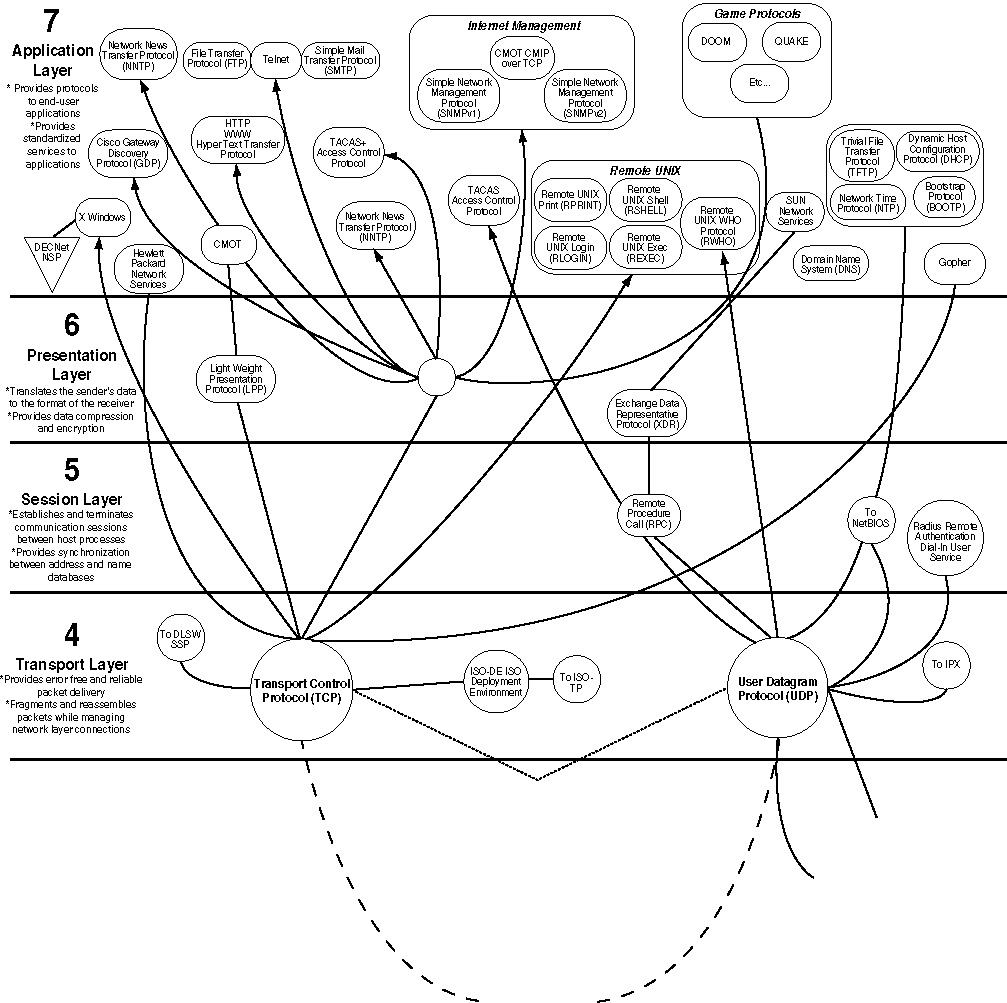| Previous | Table of Contents | Next |
The SNMP-based Internet Management Model As specified in Internet RFCs and other documents, a network management system is comprised of the following items: - • Managed Devices. Sometimes called network elements, managed devices are hardware devices such as computers, routers, bridges, switches, and terminal servers that are connected to networks.
- • Agents. Agents are software modules that reside in managed devices. They collect and store management information such as the number of error packets received by a network element.
- • Managed Object. A managed object is a characteristic of something that can be managed. For example, a list of currently active TCP circuits in a particular host computer is a managed object. Managed objects differ from variables, which are particular object instances. Using our example, an object instance is a single active TCP circuit in a particular host computer. Managed objects can be scalar (defining a single object instance) or tabular (defining multiple, related instances).
- • Management Information Base (MIB). A MIB is a collection of managed objects residing in a virtual information store. Collections of related managed objects are defined in specific MIB modules.
- • Syntax Notation. A syntax notation is a language used to describe a MIB’s managed objects in a machine-independent format. Consistent use of a syntax notation enables different types of computers to share information. Internet management systems use a subset of the International Organization for Standardization’s (ISO’s) Open System Interconnection (OSI) Abstract Syntax Notation 1 (ASN.1) to define both the packets exchanged by the management protocol and the objects that are to be managed.
- • Structure of Management Information (SMI). The SMI defines the rules for describing management information. The SMI is defined using Abstract Syntax Notation 1 (ASN.1).
- • Network Management Stations (NMSs). Sometimes called consoles, these devices execute management applications that monitor and control network elements. Physically, NMSs are usually engineering workstation-caliber computers with fast CPUs, megapixel color displays, substantial memory, and abundant disk space. At least one NMS must be present in each managed environment.
- • Parties. Newly defined in SNMPv2, a party is a logical SNMPv2 entity that can initiate or receive SNMPv2 communication. Each SNMPv2 party comprises a single, unique party identity, a logical network location, a single authentication protocol, and a single privacy protocol. SNMPv2 messages are communicated between two parties. An SNMPv2 entity can define multiple parties, each with different parameters. For example, different parties can use different authentication and/or privacy protocols and their associated restricted subset of operations.
- • Management Protocol. A management protocol is used to convey management information between agents and NMSs. SNMP is the networking community’s de facto standard management protocol.
Figure 9-3 graphically represents the most basic elements of the Internet management model. 
Figure 9-3 A detailed network management model.
The previous section covered the general network management model. In the following section, we will be more specific regarding the tools needed—SNMP. Simple Network Management Protocol (SNMP) As TCP/IP developed through the US Department of Defense (DoD) Advanced Research Projects Agency (ARPA) in the late 1960s and early 1970s, it was accepted as a US DoD networking standard. The further development of ARPA, or rather the ARPA network (ARPANet), allowed for the continued development of a global set of networks based on the TCP/IP protocol. This global set of networks evolved into what is today referred to as the Internet.
Notes:
In order to avoid confusion in this chapter, I will be referring to Simple Network Management Protocol Version 1 as SNMPv1, version two as SNMPv2, version 3 as SNMPv3, and general comments that cross versions as just SNMP. Although this may be a bit tedious, it will preserve the accuracy of the text.
Like the Transmission Control Protocol (TCP), SNMP is an Internet protocol. Internet protocols are created by the Internet community, a group of individuals and organizations that developed and/or regularly use a large, diverse international network called the Internet. The Simple Network Management Protocol (SNMP) is an application-layer protocol designed to facilitate the exchange of management information between network devices. By using SNMP-transported data (such as packets per second and network error rates), network engineers and managers can more easily manage network performance, find and solve network problems, and assist in planning for network growth.
TIPS:
SNMP is part of a larger architecture called the Network Management Framework (NMF), which is defined in RFCs. The SNMPv1 NMF is defined in RFCs 1155, 1157, 1212, and 1902-1908. The SNMPv2 NMF is defined by RFCs 1441 through 1452. SNMPv3 has not achieved RFC status as of the publication of this book. We will be discussing SNMPv3 in greater detail in Chapter 12, “Future Network Considerations.”
As the Internet developed, so did the desire and need to monitor the performance of the various network components that comprised the Internet. This desire manifested itself in the development of Simple Gateway Monitoring Protocol (SGMP). The Internet Activities Board (IAB)—renamed in 1992 to the Internet Architecture Board—was involved with the evolutionary changes to SGMP and recommended the development of an expanded Internet network management standard. The IAB handed off this new project to the Internet Engineering Task Force (IETF) who began designing, testing, and implementing a new Internet management standard. Their efforts resulted in three new RFCs: 1065, 1066, and 1067. These three documents formed the basis of SNMPv1. There are two versions of SNMP: version 1 and version 2. Most of the changes introduced in version 2 increase SNMP’s security capabilities. Other changes increase interoperability by more rigorously defining the specifications for SNMP implementation. SNMP’s creators believe that after a relatively brief period of coexistence, SNMP version 2 (SNMPv2) will largely replace SNMP version 1 (SNMPv1). SNMP is more commonly used within a TCP/IP environment, but RFCs have been written to enable operation over IPX and AppleTalk. This chapter focuses on the more common TCP/IP implementation.
| Previous | Table of Contents | Next |
|
